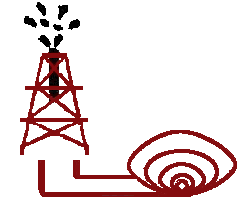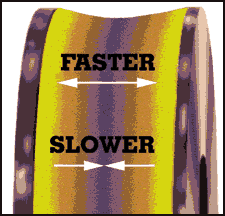Home Capabilities Gallery Discflo Pumps Discflo Literature DataBase Pump Contact Us
Unique Pumping Principle
Laminar, Pulsation-free Flow
The disc pump uses a unique non-impingement pumping principle, which is neither centrifugal nor positive displacement. The pumping mechanism is called the Discpac, a series of parallel, equally-spaced discs which move product using the forces of boundary layer and viscous drag.
When a fluid enters the pump, its molecules adhere to the surfaces of these discs, providing a boundary layer. As the discs rotate, energy is transferred to successive layers of molecules in the fluid between the discs, generating velocity and pressure gradients across the width of the Discpac.
This combination of boundary layer and viscous drag effectively creates a powerful dynamic force field that "pulls" the product through the pump in a smooth, pulsation-free flow. The fluid moves parallel to the discs, with the boundary layer creating a molecular buffer between the disc surfaces and the fluid.
The key point is that there is no "impingement" of the fluid on the pump's moving parts. This non-impingement design is where the disc pump differs from other pumps on the market, all of which impinge on the product, in effect "pushing" it through the system.
The disc pump's lack of impingement and laminar flow leads to numerous benefits in handling difficult fluids, such as viscous, abrasive, high solids and air-entrained fluids, and delicate and shear sensitive products.
Streams of fluid move parallel to the discs in the Discpac in a laminar, pulsation-free flow pattern.
Non-Impingement Pumping
Fluid is "pulled" through the disc pump without impinging on the Discpac surface, and with no close tolerances in the pump.
Further Info on the Disc Pump
Technology in Pumps



